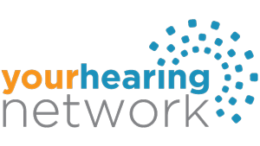Learn more about the impact of hearing loss in the workplace and ways to manage it.
Whether your employees are working in a manufacturing plant, on a construction site, running after toddlers in a daycare or giving presentations at a board meeting, one component each of these employees must have to do their job effectively is the ability to hear well.
Hearing loss is a debilitating condition and is one of the most common disabilities among workers in the U.S. Around 48 million Americans suffer from some form of hearing loss. Here are a few facts about hearing loss to consider:
- Men are almost twice as likely as women to have hearing loss among adults aged 20 – 69.
- Around 28.8 million U.S. adults could benefit from using hearing aids.
- Non-Hispanic White adults are more likely than adults in other racial/ethnic groups to have hearing loss among adults aged 20-69. Non-Hispanic Black adults have the lowest prevalence of hearing loss among adults in the same demographic.
- About 10%, or 25 million, of U.S. adults have experienced tinnitus (ear ringing) lasting at least five minutes in 2013.
- Around 2% of adults aged 45 – 54 have disabling hearing loss.
- Approximately 15% of American adults (37.5 million) aged 18 and over report some trouble hearing.
Hearing loss results in lost wages for the employees and a loss of productivity for the company. There are multiple ways hearing loss negatively impacts the workplace:
- Communication
Hearing loss can lead to miscommunication, which can make business efficiency suffer. Tasks can take longer to execute or may need to be repeated because they were completed incorrectly.
Untreated hearing loss can lead to cognitive decline, which can be up to five times higher in cases of profound hearing loss and can have an impact on an individual and team’s performance.
Balance issues are also a side effect of hearing loss, which increases the risk of workplace falls. A fall that results in time off for the employee can severely impact the workflow of the company.
- Safety
Not being able to follow a supervisor’s directions can result in mistakes that can be dangerous for an individual with hearing loss or their coworkers. Workplaces where heavy machinery, power tools or vehicles are used, and audible alert is generally the first indication that a problem has risen. Poor hearing can result in an inability to hear warning sounds and lead to catastrophic situations for a company’s work staff.
- Economics
Along with a lack of productivity, come a decrease in earning potential. Employees suffering from hearing loss earn significantly less income over their career than their colleagues who hear well. The difference can be more than $30,000 per year. This loss can also be felt by the employer. If an accident happens, the company can be exposed to legal and financial risks.
Individuals with severe hearing loss have an unemployment rate of 15.6%, double that of the hearing population. Individuals with hearing loss also find it difficult to transition to other industries, develop in their careers and advance in the companies they work for. This means that a company could lose a potentially valuable employee because their condition impedes them from moving forward.
- Social Interactions
Hearing loss is linked with loneliness. An employee with hearing loss can find it difficult to participate in conversations with coworkers during lunch or break. They may avoid office gatherings like happy hours and Christmas parties. Consequently, this can bring on feelings of depression as they self-isolate because of their condition, which can further exacerbate a declining work performance.
Despite any challenges an individual with hearing loss may have, they still can prove to be an extremely valuable employee. The American with Disabilities Act (ADA) makes it illegal to discriminate against employees who have hearing loss. Should an employee or applicant disclose they have hearing loss, there are ways for a company to accommodate an employee with hearing loss.
- Assign the employee to a workstation in a quiet part of the office.
- Provide a voice-to-text phone system to help the employee better communicate.
- Delegate responsibilities that require good hearing to other employees.
- Finding out the best way to communicate with the employee.
Some work environments are noisier than others and employees are regularly exposed to noise decibel (dB) levels of 85 dB or higher. Besides providing ear plugs or earmuffs as a form of protection, a company can also be proactive in preventing hearing loss by:
- Select tools and machinery with low noise levels.
- Ensure machinery is maintained and well-lubricated.
- Place barriers between the source of noise and employees by way of sound walls or curtains.
- Put firm guidelines around how much time an employee spends at a noise source.
- Operate loud machines during shifts when fewer employees are exposed.
- Create a quiet room where employees can enjoy some silent time to relax and recharge away from the noise of the workplace.
- Eliminate open-concept floor plans in favor of higher cubicle walls to reduce noise
- Add sound-absorbing panels to the walls and ceiling
- Install soundproof insulation if the office is on a busy road
Hearing plays a crucial role in sustaining a healthy and productive workplace. Companies can make hearing loss prevention a priority and support their employee’s hearing health by:
- Including hearing coverage in the company’s benefits package.
- Scheduling a hearing care professional to come to the workplace to conduct hearing screenings.
- Providing educational documents about hearing loss and what employees can do to protect their hearing at work and at home.
It’s important that companies remain proactive in safeguarding the health of their employees. Poor hearing health has physical and psychological effects that can bring quite a toll on the individual, their family and colleagues. The investment of good hearing not only yields positive returns for the company, but for everyone connected to it.


